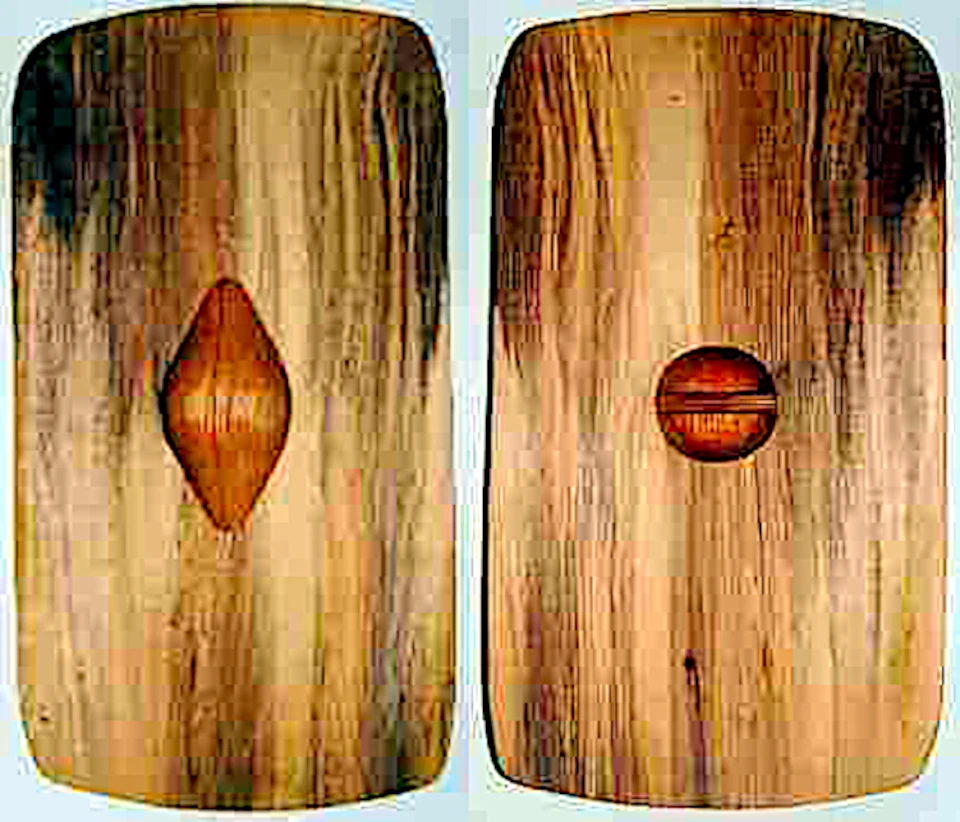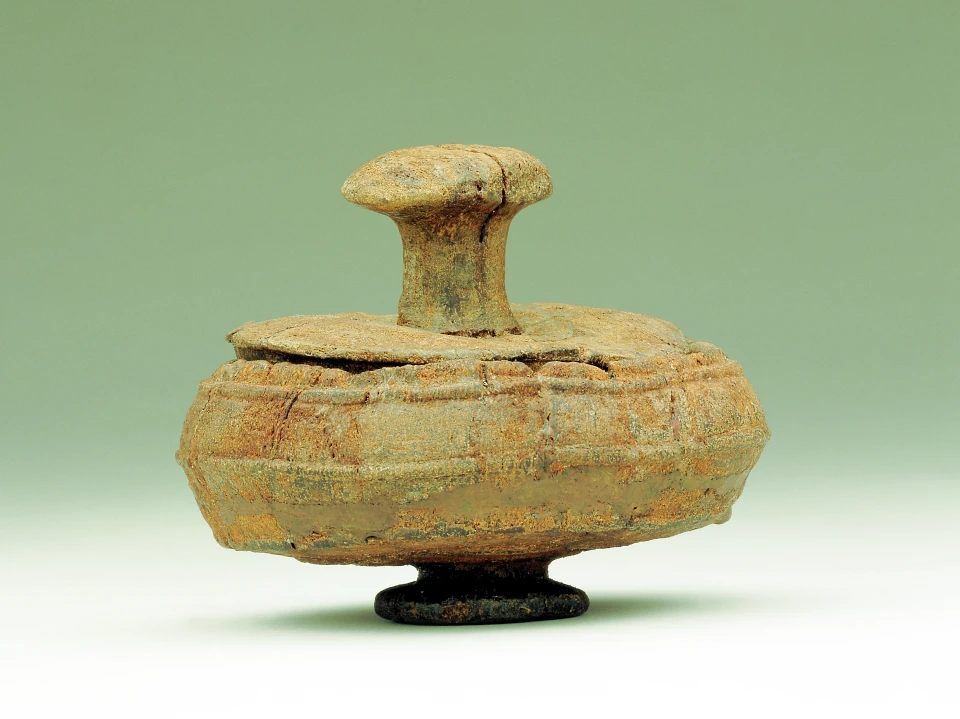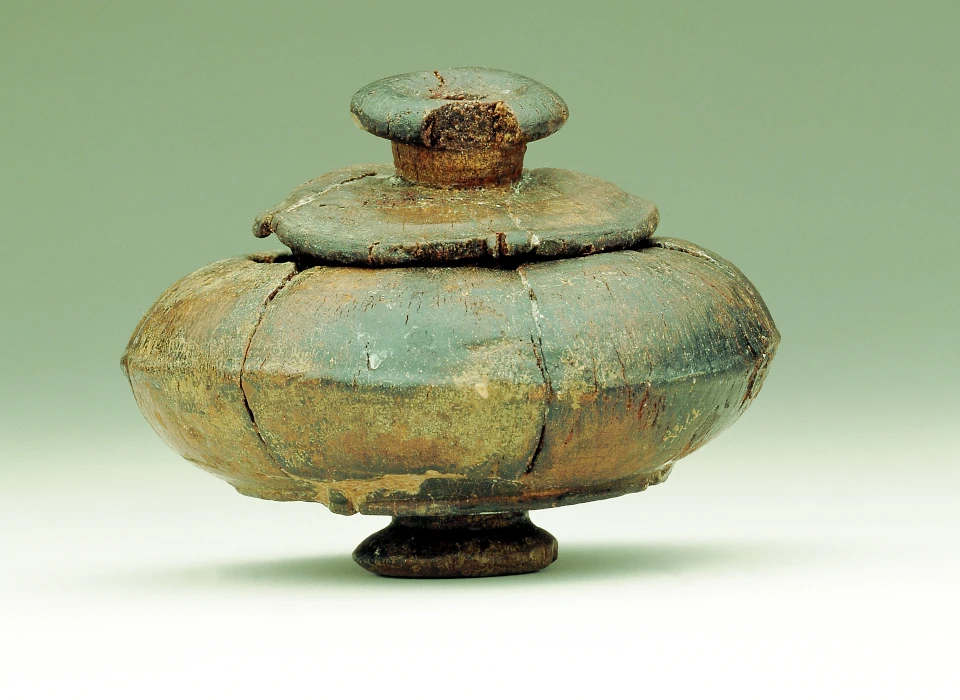The history group also took as its starting point the weapons and equipment parts that were found in addition to the boat. In addition to literature studies, the group also used the analyses carried out by the equipment group.
This group had measured and studied a number of spears, paddles, shields and swords during visits to the National Museum's departments in the Prince's Palace in Copenhagen and in Brede. In Rosenberg's report, the descriptions were closely read, and all measurements and other characteristics of the artefacts found were documented in the membership folder in clear tables.
The most numerous type of weapon found was the spears - no less than 169 have been catalogued. Then there are the spearheads discarded by peat diggers in the 1880s.
Of the 169 spearheads found, 138 were made of iron, while the rest were made of bone or deer antler.
The blacksmith group made a selection of iron spearheads in a forge at Danebod Højskole in Fynshav. It was concluded that the forging technology in which the spears had been made had been highly advanced. As the find is dated to 350 BC, only 150 years after the introduction of iron as a tool and weapon material in Northern Europe, the forging must have taken place in concentrated craft environments with a strong development of the technology. Home production of such advanced items is hardly conceivable.
The fact that the technology was advanced was supported by an analysis conducted at the State Testing Institute in Copenhagen in 1939. It was concluded that the spears analysed had been hardened by nitriding. However, a final analysis did not take place. In a letter from the State Testing Centre, dated April 1940, the case was closed ‘due to the recent events’.
As you can see, the spearheads varied greatly in size and design. Some of them were so large and powerful that they could be labelled as lance points, while others were more suitable for throwing spears. Some of the spearheads were still fitted with shafts or parts of shafts. The spearheads were all fitted with a socket for attaching the shafts.
The attachment between spearhead and shaft was made by means of a transverse rivet of bronze or iron placed in the plane of the spear. It was interesting to note that many of the rivets at the ends had a circular groove and ended with a button. Similar decorations on spear rivets have only been found on Gotland and Øland and are labelled as ‘Holstein craftsmanship’. The construction of the spears varied greatly and cannot help in identifying where they were forged.
The shields were rectangular with rounded corners. There was great variation in the height/width ratio, ranging from 105/36 cm to 60/47 cm. The shape itself points to shields from the Celtic area, typical of the Early Iron Age. In both the Bronze Age and the Roman Iron Age, the shields were circular.
An important realisation is that the identified shields did not bear the marks of battle. The finish of the shield bosses and the design of the handle and shield boss details are refined to match the finish of the boat. Metal was not used except for a few bronze rivets on one of the shields.
The shields were made from either lime, oak, alder or birch. The thickness was 12-14 mm on the majority of the surface and sloped out with the edge to a thickness of 3-6 mm. Most shields were composed of two or three boards connected by dowels. The shield bosses were mostly glued to the shield face with resin. The handles were relatively similar with a very elegant assembly, being turned into a pair of grooves in the oval opening of the shield plate.
The find contains no bows, arrows or arrowheads, even though this type of weapon was known in both the Stone Age and the Bronze Age.
There were only a small number of swords in the find, as only 11 have been positively identified. They were relatively short (from 33 to 70 cm), all were single-edged and with the grip tongue extending from the centre line of the sword.
The swords were stabbing weapons. They are said to be East Germanic.
As of this writing, only 2 swords have been forged.
An important element of the find was an indication of chain mail, perhaps 15-20 pieces in total. The chain mail appeared in the find as an area of 10-12 square metres of rust with clear impressions of rings with a diameter of 1 cm. It is estimated that a similarly large area had been excavated during peat digging. Here again we have an expression of the high level of forging technology, which the group of blacksmiths did not dare to imitate. The find is the largest chainmail find in Europe.
Foto: The National Museum.
The find also included a number of carved wooden spoons, plates and tins. The tins are of particular interest as they were turned. Woodturning technology was known in southern Germany in the Celtic regions, but was not really widespread until the early Middle Ages. Nor was the turning of pottery known. The shape of a few turned pottery tins, albeit in clay, is known from Bornholm and the urn graves in Jastorp near Lüneburg. These pottery boxes were 'coiled' up
Part of a bronze needle in the find has a characteristic curved stem and is called a Holstein needle. Such needles were common throughout northern Germany. Finally, a clay pot, or rather the shards of a clay pot, was found on a shield. It had been reconstructed and identified as a storage jar made by coiling, and the shape is known not only from Denmark but also from the Holstein and Hanover area.
Kilder
- Nylen, E.
- Hvad Haanden former er Aandens Spor.









